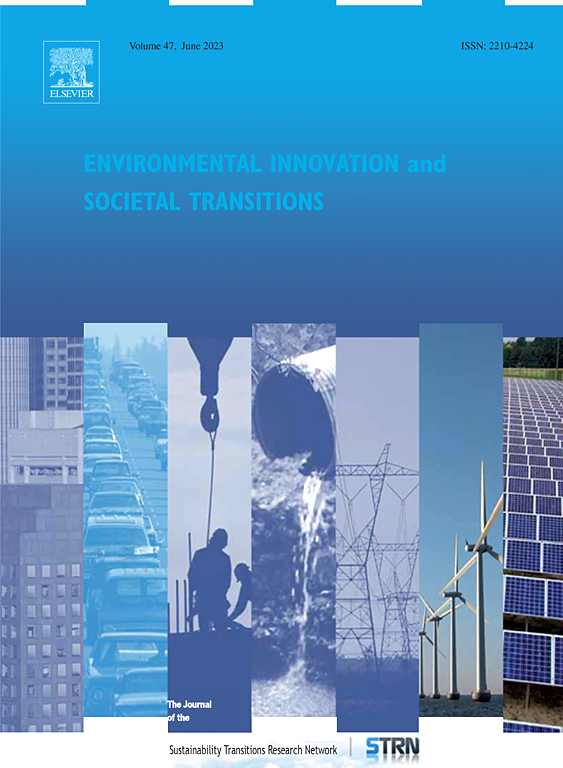The changing role of the state: two governance models of China’s low-carbon energy transitions
IF 6.1
2区 经济学
Q1 ENVIRONMENTAL SCIENCES
Environmental Innovation and Societal Transitions
Pub Date : 2025-09-26
DOI:10.1016/j.eist.2025.101057
引用次数: 0
Abstract
The paper examines the changing role of the state in sustainability transitions by exploring how governance structures co-evolve with different transition pathways. Using the case of China’s green energy transitions, we compare two distinct governance structures that have emerged in two Chinese provinces. The analysis challenges the dominant narrative that China’s transitions are exclusively state-led, demonstrating that divergent governance structures can emerge at the subnational level. Specifically, we identify two models: one that adheres to a centralised power system, referred to as the developmental state model; the other departs from the existing model by building more distributed energy systems driven by a wide range of actors, referred to as ‘distributed governance structures’. While it remains uncertain whether these two models will complement or compete each other in the future, they represent two divergent transition pathways that could shape China’s future low-carbon development.
国家角色的转变:中国低碳能源转型的两种治理模式
本文通过探讨治理结构如何与不同的转型路径共同演变,考察了国家在可持续性转型中的角色变化。以中国的绿色能源转型为例,我们比较了中国两个省份出现的两种截然不同的治理结构。该分析挑战了中国转型完全由国家主导的主流说法,表明不同的治理结构可以在地方层面出现。具体来说,我们确定了两种模式:一种是坚持中央集权的电力系统,被称为发展型国家模式;另一种是通过构建由广泛的参与者驱动的更多分布式能源系统来脱离现有的模型,称为“分布式治理结构”。虽然这两种模式在未来是互补还是竞争还不确定,但它们代表了两种不同的转型路径,可能会影响中国未来的低碳发展。
本文章由计算机程序翻译,如有差异,请以英文原文为准。
求助全文
约1分钟内获得全文
求助全文
来源期刊

Environmental Innovation and Societal Transitions
Energy-Renewable Energy, Sustainability and the Environment
CiteScore
13.60
自引率
19.40%
发文量
90
审稿时长
56 days
期刊介绍:
Environmental Innovation and Societal Transitions serves as a platform for reporting studies on innovations and socio-economic transitions aimed at fostering an environmentally sustainable economy, thereby addressing structural resource scarcity and environmental challenges, particularly those associated with fossil energy use and climate change. The journal focuses on various forms of innovation, including technological, organizational, economic, institutional, and political, as well as economy-wide and sectoral changes in areas such as energy, transport, agriculture, and water management. It endeavors to tackle complex questions concerning social, economic, behavioral-psychological, and political barriers and opportunities, along with their intricate interactions. With a multidisciplinary approach and methodological openness, the journal welcomes contributions from a wide array of disciplines within the social, environmental, and innovation sciences.
 求助内容:
求助内容: 应助结果提醒方式:
应助结果提醒方式:


